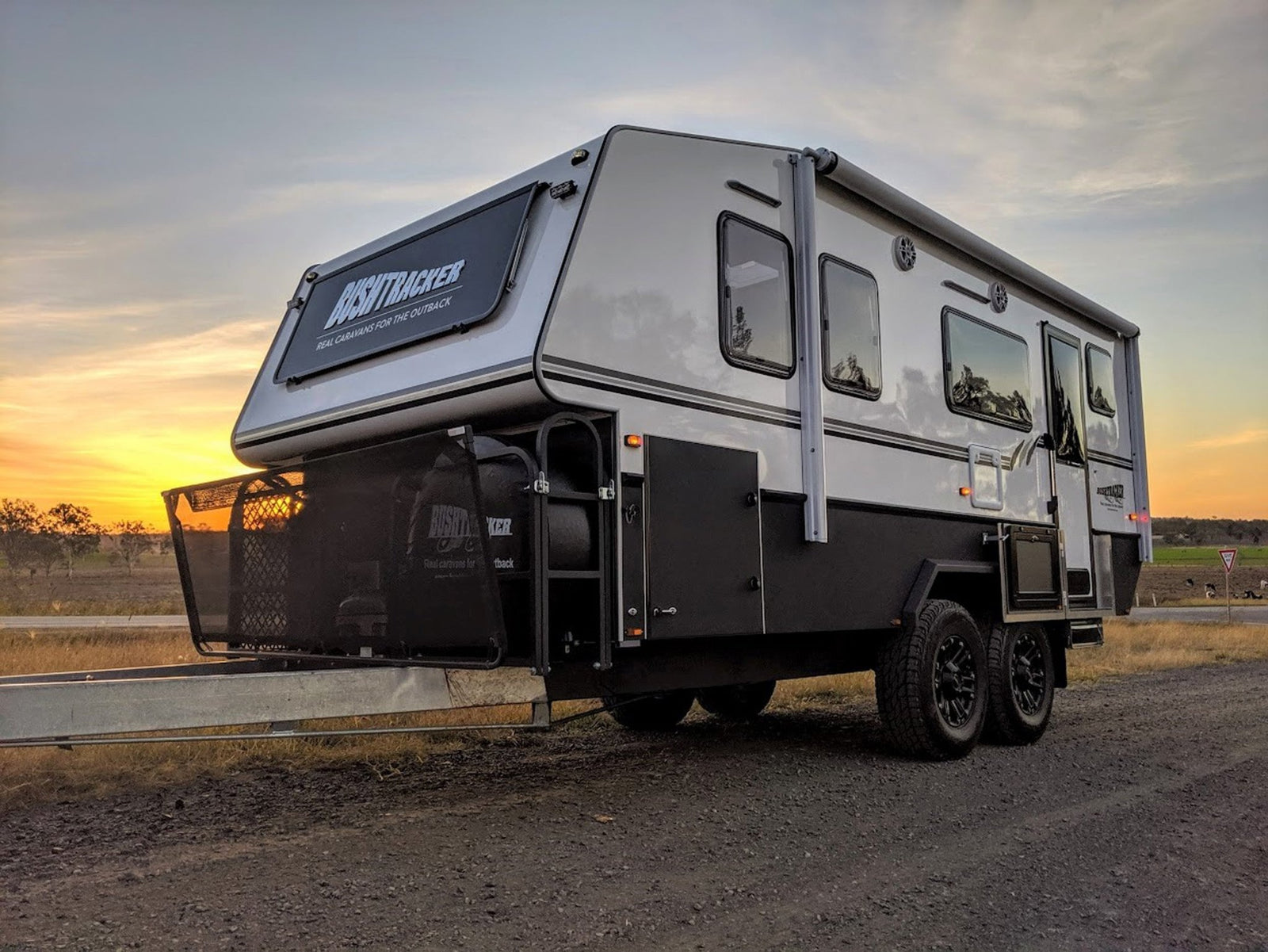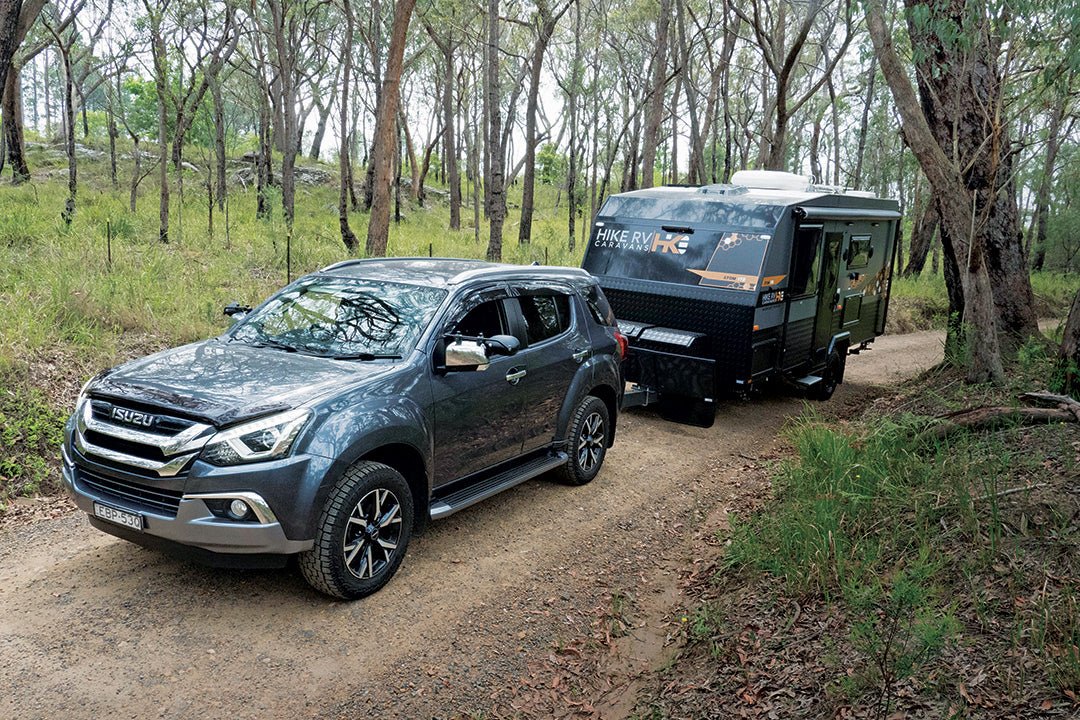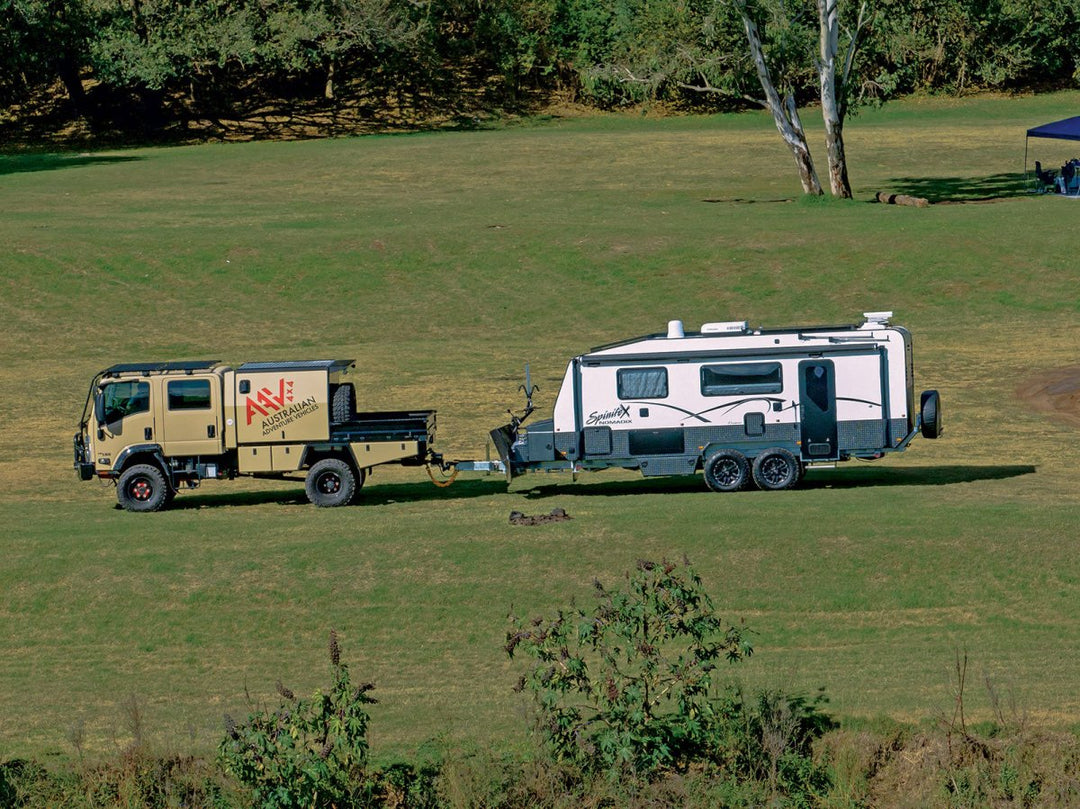What Makes an Offroad Caravan?

Anyone familiar with the caravan scene in Australia will know that over the last decade there has been a substantive increase in the number offroad caravans around. Once the domain of a relatively small number of specialist manufacturers, just about every dealer in Australia has several offroad or rough road/semi-offroad caravans available. Some manufacturers only have offroad models for sale, but others seem to offer both on-road and offroad from the same range.
In order to cope with road conditions found in outback Australia, offroad caravans have to be built somewhat differently to a normal road tourer.
“What breaks most vans is an extended length of time on corrugated roads,” Dave Biggar from Zone RV told me. “It can be anything from chassis issues to cupboard doors not closing properly. That’s one of the reasons why building an offroad caravan isn’t just a few things different from an on-road van, but any number of items.”
Bushtracker’s Matt Kurvink echoes that line of thinking. “There are a multitude of things, everything from dustproofing to using suitable appliances, that go to making up a good offroad caravan,” he said.
Visually from the outside, there are a few characteristic clues that indicate an offroad caravan, but there are also a few items that can’t be seen that play a part in making a good offroad caravan.
OFFROAD HITCH
Starting at the sharp end, a standard ball coupling doesn’t work for offroad travel. Although perfectly acceptable for on-road travel, it has limited movement so could break off as the caravan moves up and down or from side to side. An offroad hitch allows for both vertical and horizontal movement.
There are a number of manufacturers, like AL-KO (Offroad Pin Coupling), Cruisemaster (DO35/45) and McHitch (Uniglide), who make a decent offroad hitch. In the aftermarket, one benefit of hitches is that they are usually bolted to the drawbar and can easily be changed if needed.
CHASSIS
The de rigueur chassis is a box section design with 150mm x 50mm (6in x 4in) rails and drawbar and 50mm x 50mm (2in x 2in) cross members. It’s designed to be strong but does carry a weight penalty.
Not all manufacturers do this, though. Sunland Caravans, for instance, use an aluminium/steel composite chassis which has rails made of structural alloy with a hot dipped galvanised steel drawbar and suspension sub frame. Zone RV use a single 150mm rails with less of a box section structure, instead using a 32mm fibreglass floor panel that is glued directly to the chassis.
If there was one thing everyone agreed on when I spoke to them, it was the necessity of not having things like plumbing or electrical cables hanging down below the chassis where they could be damaged. Damaged brake cables, for instance, could lead to an instant driving problem.
Water tanks mounted below the chassis should be as high as possible. Many are protected by galvanised sheeting, but some manufacturers use custom made polyethylene tanks that don’t require further protection and fit better around the chassis and suspension.
SUSPENSION
Undoubtedly a big feature of any offroad caravan fit out is the suspension. Beam axle suspension is problematic on locations like dirt tracks or beaches because it can drag between the wheel tracks. Independent suspension, meanwhile, gets around this.
According to Dave Biggar, “Suspension in any caravan is critical. It has to literally protect the asset being the caravan and give it the smoothest ride possible.”
Manufacturers like Simplicity, Cruisemaster, AL-KO and G & S Control Rider all make independent suspension systems, in some cases with varying grades of offroad/rough road capability. There are even some caravan manufacturers, Kedron for instance, who have developed their own KRS suspension. Even mass manufacturer Jayco has done the same thing, developing their JTECH independent system after thousands of kilometres of driving.
Bushtracker looks to the military for its suspension design. “Having used Simplicity independent suspension over a number of years, we reckon that given its military origins, it will go anywhere. One of our latest designs is a load sharing coil spring setup that uses progressive springs that gives a smooth ride over a range of loads,” Matt Kurvink said.
The other important components of a suspension system are the wheels and tyres. Most manufacturers tend to use alloy wheels these days and the tyres should have a decent side wall and tread thickness to minimise the risk of sidewall damage and punctures rather than just looking the part.
BODY CONSTRUCTION
For the manufacturers who use a frame, aluminium seems to be the material of choice. Kedron, for instance, use a fully interlocked frame that has a welded roof and wall frames held together by steel anti-vibration henrob pins, fixed downwards and sideways by high tensile huck bolts. Sunland builds its frames from 25mm x 25mm and 25mm x 50mm welded box section aluminium, and Bushtracker does the same.
“For our vans, an aluminium frame is best. The frame is welded and bolted together and then bolted through to the chassis,” Kurvink said.
On the other hand, Zone RV doesn’t use a frame at all. Biggar reckons that it’s good technology.
“We use fibreglass composite panels and a frameless monocoque construction. For our bonding technology we use high elongation glues which have large ‘stretch’. The benefit of these is that they don’t deteriorate or rattle loose like rivets, screws or nuts and bolts. We use bonding glues for everything — floor to chassis, walls to roof and general cabinetry,” he said.
External cladding also seems to be the choice. Some manufacturers opt for the tried and trusted aluminium cladding, but others choose aluminium or fibreglass composite. Currently black or polished alloy checkerplate is the de rigueur lower wall protection choice of many a manufacturer who builds offroad caravans, but some specialists prefer to use something like a Raptor or Rhino coating — apart from anything else it’s a weight saver and, I reckon, looks better.
INTERNAL CABINETRY
I suspect there are manufacturers who, when they create an offroad caravan, do much about area underneath the chassis but less above it. Clearly, though, an offroad caravan body is going to be subject to much more stress and strain than a road tourer.
Manufacturers have various methods of fitting out their vans. Matt Kurvink noted, “Inside our vans, the internal cabinetry is screwed and bonded to the frame in a way that the framework effectively supports the cabinetry, which in itself is framed.”
Whilst Bushtracker is a specialist manufacturer, Jayco produce both offroad and on-road caravans, but is there a difference?
In the case of Jayco’s All-Terrain van, an offroad model, Marketing Manager Lauren Bacon advised that, “The body of the van remains the same Tough frame sandwich panel, however, all the furniture fixings utilise aluminium angle brackets for increased strength both within cabinets and also fixing the cabinetry to the walls and floor. There are no plastic moulded furniture brackets utilised in the All-Terrain range.”
It’s not only the big items either. Small items like support drawer runners should have ball bearing fittings for smooth and reliable operation. Kedron, for instance, use a marine fitting for their door and drawer latches.
Appliances and components, like cooktops, fridges and air conditioners, need to be suitable for rough offroad use too. Several manufacturers I spoke to conduct extensive testing of any appliance before it’s fitted because the last thing anyone needs is a fridge that falls apart after a day of rough road travel.
Mostly out of sight — but not always — electrical wiring needs to be run where is cannot be damaged. Where it’s run between the caravan frame for instance, it’s not only needs to be well supported but also protected from any chafing or other movement damage.
DUST AND WATER PROTECTION
Any caravan built for offroad use needs to have good water and dust ingress protection, particularly the latter since it’s a fact of life on many outback roads. Some manufacturers, like Jayco, opt to use Dometic’s Dust Reduction System to minimize dust entry, but others use purpose designed construction methods and high-end sealants try to keep out dust in the first place.
Creek crossings are something to be considered and while floors in particular need to be fully waterproofed, manufacturers like Bushtracker design their vans to be good for a 1.2m water level.
REMOTE TRAVEL CAPACITY
Having a caravan that can go anywhere does imply that when you get to where you are going, there usually won’t be a convenient power point or water outlet. Therefore, the electrics (e.g. batteries and solar panels) should be of a capacity to ensure totally remote 12V operation. Additionally, water tanks — since none of us can survive without the precious liquid — should be large enough to support the anticipated time of remote living. Still on water, it’s important for any offroad van to have a good payload because water in quantity is quite heavy.
FINALLY
Like any caravan, weight is a factor in any offroad caravan. It’s important to have most of the heavy items over the wheel axles to give a good weight balance, which is why any storage boxes, back and front, should always be included in the overall design.
There is much more to this rather extensive topic of offroad caravan construction, but this article should cover most of the basics.






